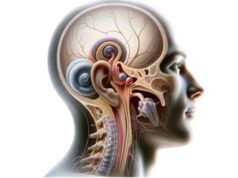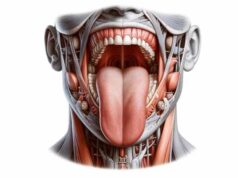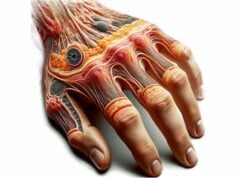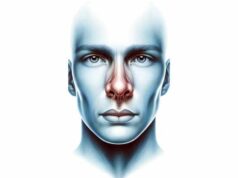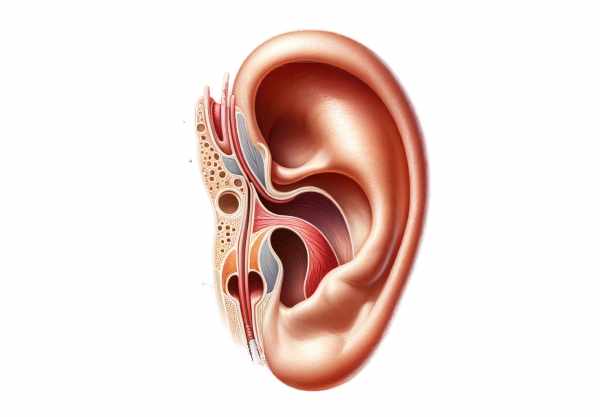
The ears are not only essential for hearing but also play a pivotal role in balance and spatial orientation. These complex sensory organs consist of three distinct regions—the outer ear, middle ear, and inner ear—that work in harmony to capture sound, transmit vibrations, and convert them into electrical signals for the brain. Moreover, the ears protect our body from environmental hazards while contributing to our sense of equilibrium. Understanding their intricate structure, function, and potential disorders is crucial for maintaining auditory health. This guide explores every aspect of ear anatomy, auditory and balance physiology, common disorders, diagnostic techniques, treatment modalities, and practical tips for keeping your ears healthy.
Table of Contents
- Structural Framework & Composition
- Functional Mechanisms & Auditory Dynamics
- Prevalent Ear Disorders & Clinical Manifestations
- Diagnostic Modalities for Auditory Evaluation
- Therapeutic Options & Interventions
- Nutritional Strategies & Supplementation
- Lifestyle Recommendations for Optimal Ear Function
- Reliable References & Further Reading
- Frequently Asked Questions
Structural Framework & Composition
The human ear is an intricate organ that comprises three main regions: the outer ear, the middle ear, and the inner ear. Each region is uniquely structured to perform specific roles that contribute to both hearing and balance.
Outer Ear: Sound Collection and Direction
- Pinna (Auricle):
The visible part of the ear, known as the pinna, is composed of elastic cartilage covered by skin. Its curved, intricate shape not only enhances the aesthetic appearance but also plays a critical role in capturing sound waves. The pinna’s design helps to funnel and amplify these sound waves into the ear canal, aiding in sound localization and directional hearing. - External Auditory Canal:
This ear canal is a tube-like structure approximately 2.5 centimeters long that extends from the pinna to the tympanic membrane (eardrum). Lined with skin that contains hair follicles and ceruminous glands, it produces earwax (cerumen) which acts as a natural barrier by trapping dust, debris, and pathogens while preventing moisture loss. - Tympanic Membrane (Eardrum):
The tympanic membrane is a thin, conical layer that separates the outer ear from the middle ear. It vibrates in response to sound waves entering the ear canal. These vibrations are then transmitted to the ossicles of the middle ear. Its delicate yet resilient structure is essential for effective sound conduction.
Middle Ear: The Sound Amplifier
- Ossicular Chain:
The middle ear contains three tiny bones called ossicles—malleus, incus, and stapes—which form a lever system that amplifies the sound vibrations from the tympanic membrane. - The malleus (hammer) is attached to the eardrum and conveys vibrations to the incus.
- The incus (anvil) acts as a bridge, transferring energy from the malleus to the stapes.
- The stapes (stirrup) is the smallest bone in the body; it pushes against the oval window of the inner ear, transmitting the amplified sound waves into the fluid-filled cochlea.
- Eustachian Tube:
A narrow canal connecting the middle ear to the nasopharynx, the Eustachian tube plays a vital role in equalizing air pressure on both sides of the tympanic membrane. By maintaining balanced pressure, it ensures proper vibration of the eardrum and prevents discomfort during altitude changes. - Middle Ear Cavity:
This air-filled space houses the ossicles and is lined with a mucous membrane. It functions as a resonating chamber that aids in sound amplification and protects the inner ear from pathogens.
Inner Ear: The Sensory Transducer
- Cochlea:
The cochlea is a spiral-shaped, fluid-filled structure that converts mechanical sound vibrations into electrical signals. Within the cochlea lies the organ of Corti, which contains hair cells that respond to different frequencies. These cells transform mechanical energy into neural impulses that are sent to the brain via the auditory nerve. - Vestibular Apparatus:
Comprising the semicircular canals and otolithic organs (utricle and saccule), the vestibular system is responsible for maintaining balance and spatial orientation. - Semicircular Canals: Three fluid-filled loops detect rotational movements of the head.
- Otolithic Organs: The utricle and saccule sense linear acceleration and gravitational forces by utilizing tiny calcium carbonate crystals (otoconia) that stimulate hair cells.
- Auditory and Vestibular Nerves:
The auditory (cochlear) nerve transmits sound information from the cochlea to the brain, while the vestibular nerve carries balance and spatial orientation signals from the inner ear to the brain.
Integration and Interconnection
The three regions of the ear work seamlessly together. The outer ear captures sound waves and directs them inward, the middle ear amplifies and transmits these vibrations, and the inner ear converts them into electrical signals while also providing vital information about balance. This complex integration ensures that we can perceive a wide range of sounds and maintain our equilibrium in everyday life.
Functional Mechanisms & Auditory Dynamics
The ear’s functions extend far beyond mere sound detection; it is an exquisitely tuned organ that plays an essential role in both auditory perception and balance. The complex physiological processes involved in hearing and equilibrium rely on the coordinated interaction between various ear components.
Hearing: From Sound Capture to Signal Processing
- Sound Wave Collection:
The journey begins with the pinna, which captures and channels sound waves into the external auditory canal. The ear’s unique shape aids in pinpointing the direction and distance of sounds, enhancing spatial awareness. - Vibration Transmission:
Once sound waves reach the tympanic membrane, they cause it to vibrate. These vibrations are then transmitted to the middle ear ossicles, which act as a lever system to amplify the sound. The stapes then conveys these vibrations to the oval window of the cochlea. - Signal Conversion:
Within the cochlea, the mechanical energy is transformed into electrical impulses by the hair cells located in the organ of Corti. These nerve impulses are relayed via the auditory nerve to the brain, where they are interpreted as distinct sounds. This entire process, from vibration to neural signaling, is critical for clear and precise hearing.
Balance and Spatial Orientation
- Vestibular Input:
The inner ear’s vestibular system provides the brain with essential information about head movement and position. The semicircular canals detect rotational motion, while the otolithic organs sense linear acceleration and gravitational forces. - Integration with Other Senses:
The information from the vestibular system is integrated with visual and proprioceptive cues to maintain balance, coordinate movement, and stabilize vision during head movements. This multisensory integration is vital for overall equilibrium and spatial orientation.
Additional Roles in Auditory Processing
- Sound Localization:
The outer ear’s unique contours, combined with the time and intensity differences of sound waves reaching each ear, enable the brain to accurately determine the origin of sounds. This localization is fundamental for navigating complex auditory environments. - Dynamic Range and Adaptation:
The ear is capable of processing a vast range of sound intensities, from whisper-quiet to extremely loud noises. Adaptive mechanisms within the middle and inner ear help regulate sensitivity, ensuring that the auditory system can respond appropriately to various environmental stimuli.
Protective Mechanisms
- Earwax Production:
Cerumen (earwax) produced by glands in the external auditory canal traps dust, debris, and microorganisms, preventing them from reaching the delicate structures of the middle and inner ear. - Acoustic Reflex:
The ossicles in the middle ear, along with the stapedius muscle, contract reflexively in response to loud sounds. This acoustic reflex helps protect the inner ear from potential damage due to excessive sound intensity.
Through these intricate physiological mechanisms, the ears not only enable us to hear but also play a vital role in maintaining our balance and spatial orientation. The combined functions of sound collection, transmission, conversion, and protective responses illustrate the extraordinary adaptability and precision of the auditory system.
Prevalent Ear Disorders & Clinical Manifestations
Despite their robustness, the ears are vulnerable to a range of disorders that can affect hearing, balance, and overall quality of life. Recognizing the signs and symptoms of these conditions is crucial for early intervention and effective management.
Hearing Loss
- Conductive Hearing Loss:
This type of hearing loss results from problems in the outer or middle ear that impede sound conduction. Common causes include earwax impaction, otitis externa (swimmer’s ear), otitis media, and ossicular chain disruptions. Patients often experience muffled sounds and difficulty hearing in noisy environments. - Sensorineural Hearing Loss:
Often permanent, sensorineural hearing loss is caused by damage to the inner ear structures, particularly the hair cells in the cochlea, or the auditory nerve. Factors such as aging (presbycusis), prolonged noise exposure, ototoxic medications, and genetic predispositions contribute to this condition. - Mixed Hearing Loss:
A combination of conductive and sensorineural loss, mixed hearing loss requires a comprehensive treatment approach that addresses both the mechanical and neural components of auditory impairment.
Infections and Inflammations
- Otitis Externa:
Also known as “swimmer’s ear,” otitis externa is an infection of the outer ear canal, often caused by bacteria or fungi. Symptoms include pain, itching, and discharge, and the condition is typically treated with topical antibiotics or antifungals. - Otitis Media:
Common in children, otitis media is an infection or inflammation of the middle ear. It is characterized by ear pain, fever, and hearing loss. Treatment often involves antibiotics, pain relievers, and sometimes the insertion of tympanostomy tubes to facilitate drainage.
Tinnitus and Hyperacusis
- Tinnitus:
Tinnitus is the perception of sound—often described as ringing, buzzing, or hissing—without an external source. It is commonly associated with sensorineural hearing loss, noise exposure, or ototoxic medications. While tinnitus can be distressing, treatment options include sound therapy, cognitive behavioral therapy (CBT), and, in some cases, medication. - Hyperacusis:
Hyperacusis is an increased sensitivity to normal environmental sounds, which can be debilitating for some individuals. It may occur alongside tinnitus and is often managed with sound desensitization therapies and counseling.
Balance and Vestibular Disorders
- Benign Paroxysmal Positional Vertigo (BPPV):
BPPV is caused by dislodged otoliths in the semicircular canals, leading to brief episodes of vertigo triggered by changes in head position. Treatment typically involves canalith repositioning maneuvers (e.g., the Epley maneuver). - Meniere’s Disease:
This disorder is characterized by episodes of vertigo, tinnitus, fluctuating hearing loss, and a feeling of fullness in the ear. It is believed to result from an imbalance of fluid in the inner ear, with treatment options including dietary modifications, diuretics, and in severe cases, surgery. - Vestibular Neuritis:
Often following a viral infection, vestibular neuritis involves inflammation of the vestibular nerve, leading to prolonged vertigo, imbalance, and nausea. Management includes vestibular rehabilitation exercises and medications to control symptoms.
Traumatic Injuries
- Tympanic Membrane Perforation:
A rupture of the eardrum can occur due to infections, trauma, or sudden pressure changes. Symptoms include ear pain, hearing loss, and sometimes discharge. Many perforations heal spontaneously, but persistent cases may require surgical repair. - Barotrauma:
Barotrauma results from rapid changes in pressure, such as during air travel or diving. It can cause pain, hearing changes, and even rupture of the eardrum. Preventive measures include equalizing pressure and using decongestants.
Structural and Congenital Anomalies
- Congenital Hearing Loss:
Some individuals are born with structural anomalies in the ear that can lead to hearing impairment. These may include malformations of the external ear, ossicular anomalies, or inner ear defects. Early detection and intervention are key to managing congenital hearing loss. - Otosclerosis:
Otosclerosis is a condition in which abnormal bone growth around the stapes leads to its fixation, resulting in conductive hearing loss. Treatment options include hearing aids or surgical procedures such as stapedectomy.
The wide spectrum of ear disorders underscores the importance of early diagnosis and tailored treatment strategies to prevent long-term complications and maintain optimal auditory and vestibular function.
Diagnostic Modalities for Auditory Evaluation
Accurate diagnosis of ear disorders is critical for effective treatment. A combination of clinical evaluations, audiological assessments, imaging techniques, and specialized tests is employed to determine the underlying causes of auditory and balance issues.
Clinical Examination and Patient History
- Detailed History:
Gathering comprehensive patient history helps identify the onset, duration, and severity of symptoms such as hearing loss, tinnitus, vertigo, ear pain, and discharge. Information about exposure to loud noises, past infections, and family history of hearing disorders is also collected. - Physical Examination:
An otoscopic examination is performed to inspect the external auditory canal and tympanic membrane for signs of infection, wax impaction, or structural abnormalities. Palpation and observation of the head and neck can provide additional clues regarding balance or neurological involvement.
Audiological Assessments
- Pure Tone Audiometry:
This standard hearing test measures a person’s sensitivity to various sound frequencies, producing an audiogram that helps differentiate between conductive, sensorineural, and mixed hearing losses. - Speech Audiometry:
Evaluates the ability to recognize and repeat spoken words at different volumes, which is essential for assessing real-world communication difficulties. - Tympanometry:
This test evaluates the movement of the tympanic membrane in response to changes in air pressure, providing insight into middle ear function and the presence of fluid or eardrum perforations.
Imaging Techniques
- Otoscopy:
A primary, non-invasive method for visually inspecting the ear canal and tympanic membrane. It is useful for diagnosing external ear infections and detecting abnormalities such as perforations. - Computed Tomography (CT) Scan:
CT imaging is invaluable for assessing bony structures in the ear, such as the ossicles and the bony labyrinth. It is particularly useful for identifying otosclerosis, cholesteatomas, and traumatic injuries. - Magnetic Resonance Imaging (MRI):
MRI provides detailed images of soft tissues, including the inner ear structures and auditory nerve. It is used to detect tumors, such as acoustic neuromas, and to evaluate inflammatory or vascular anomalies in the auditory system.
Vestibular Testing
- Videonystagmography (VNG):
This test tracks eye movements to assess the vestibular system’s function. By evaluating the vestibulo-ocular reflex, clinicians can diagnose balance disorders and vertigo. - Rotational Chair Testing:
Involves rotating the patient and measuring corresponding eye movements. This test is used to evaluate the functionality of the semicircular canals and diagnose conditions like vestibular neuritis. - Electrocochleography (ECoG):
Measures electrical potentials in the inner ear in response to sound stimuli, aiding in the diagnosis of Meniere’s disease and other inner ear disorders.
Electrophysiological Assessments
- Auditory Brainstem Response (ABR):
This non-invasive test records electrical activity in the auditory nerve and brainstem in response to sound stimuli. It is particularly useful for assessing hearing in infants and detecting neurological issues. - Otoacoustic Emissions (OAE):
OAEs assess the function of the outer hair cells in the cochlea by measuring the sounds they emit in response to auditory stimulation. This test is widely used in newborn hearing screening programs.
Through these comprehensive diagnostic modalities, healthcare professionals can accurately assess ear function, pinpoint the cause of auditory and balance disorders, and develop targeted treatment plans to restore and preserve hearing and vestibular health.
Therapeutic Options & Interventions
Effective management of ear disorders involves a range of treatment strategies tailored to the specific condition and its severity. From conservative medical therapies to advanced surgical procedures, interventions are designed to restore hearing, alleviate symptoms, and improve overall quality of life.
Medical Treatments
- Pharmacological Interventions:
- Antibiotics and Antifungals:
Used to treat bacterial and fungal infections such as otitis media and otitis externa, respectively. Timely administration prevents complications and promotes recovery. - Decongestants and Antihistamines:
These medications help manage Eustachian tube dysfunction and allergy-related congestion, improving middle ear ventilation. - Corticosteroids:
Systemic or intratympanic corticosteroids can reduce inflammation in conditions like sudden sensorineural hearing loss or Meniere’s disease. - Hearing Amplification:
- Hearing Aids:
Devices that amplify sound are effective for managing sensorineural hearing loss, particularly in age-related hearing impairment. - Cochlear Implants:
For individuals with severe to profound sensorineural hearing loss, cochlear implants bypass damaged hair cells by directly stimulating the auditory nerve, thereby enhancing auditory perception.
Surgical Treatments
- Myringotomy and Tympanostomy Tubes:
In cases of chronic otitis media with effusion, a small incision is made in the tympanic membrane to drain fluid, and tubes are inserted to maintain middle ear ventilation. - Tympanoplasty:
Surgical repair of a perforated eardrum or reconstruction of the ossicular chain helps restore proper sound transmission and improve hearing. - Stapedectomy:
In otosclerosis, the stapes bone becomes fixed. A stapedectomy replaces the stapes with a prosthetic device, restoring the conductive mechanism of the middle ear. - Endoscopic Ear Surgery:
Minimally invasive techniques using endoscopes have improved visualization and treatment of various middle ear conditions, reducing recovery times and improving outcomes.
Innovative and Regenerative Therapies
- Gene Therapy:
Experimental treatments aim to correct genetic defects that contribute to hereditary hearing loss. Early studies show promise in restoring function at the molecular level. - Stem Cell Therapy:
Research into the use of stem cells for regenerating damaged inner ear hair cells may pave the way for future treatments for sensorineural hearing loss. - Tinnitus Management:
Approaches such as sound therapy, cognitive behavioral therapy (CBT), and neuromodulation techniques help patients manage tinnitus symptoms effectively.
Vestibular Rehabilitation
- Vestibular Rehabilitation Therapy (VRT):
A specialized program of exercises designed to improve balance and reduce dizziness in patients with vestibular disorders. VRT helps retrain the brain to compensate for inner ear imbalances. - Canalith Repositioning Maneuvers:
For conditions like benign paroxysmal positional vertigo (BPPV), maneuvers such as the Epley maneuver help reposition dislodged otoconia in the semicircular canals, alleviating vertigo.
Through a multidisciplinary approach, these therapeutic options can be tailored to the individual needs of patients. Whether addressing infections, structural abnormalities, or degenerative conditions, a combination of medical, surgical, and rehabilitative treatments can significantly improve ear function and quality of life.
Nutritional Strategies & Supplementation
Nutrition plays a vital role in maintaining ear health by supporting cellular repair, reducing inflammation, and enhancing overall auditory function. A balanced diet enriched with specific vitamins, minerals, and natural supplements can help protect and promote healthy ear function.
Essential Vitamins and Minerals
- Vitamin D:
Crucial for bone health, vitamin D supports the structural integrity of the ossicles and the bony structures of the ear. It may also help prevent otosclerosis. - Vitamin B12:
Important for nerve health, vitamin B12 deficiency has been linked to tinnitus and hearing loss. Maintaining adequate levels supports the auditory nerve’s function. - Vitamin C:
An antioxidant that contributes to collagen synthesis, vitamin C helps maintain the integrity of ear tissues and may protect against oxidative stress. - Calcium and Magnesium:
Both minerals are essential for proper neuromuscular function. Calcium aids in signal transmission in auditory pathways, while magnesium supports overall muscle and nerve health.
Omega-3 Fatty Acids
- Anti-Inflammatory Effects:
Omega-3 fatty acids, found in fish oil and flaxseed, improve blood circulation and reduce inflammation. This can be particularly beneficial in reducing age-related hearing loss and protecting against noise-induced damage.
Herbal Supplements and Natural Compounds
- Ginkgo Biloba:
Known to improve blood flow, Ginkgo biloba may help alleviate symptoms of tinnitus and enhance overall auditory function. - Garlic:
With its natural antimicrobial and antioxidant properties, garlic supports circulatory health and may help prevent ear infections. - Turmeric (Curcumin):
Curcumin’s anti-inflammatory benefits can aid in reducing chronic inflammation in ear tissues and protecting auditory function.
Antioxidants and Enzymes
- Alpha-Lipoic Acid:
This antioxidant helps protect the auditory system from oxidative stress, potentially reducing the risk of noise-induced hearing loss. - N-Acetylcysteine (NAC):
As a precursor to glutathione, NAC supports cellular defense against oxidative damage in the inner ear and may reduce hearing loss due to noise exposure. - Coenzyme Q10 (CoQ10):
Essential for energy production, CoQ10 protects the inner ear cells and may help preserve auditory function over time.
Hormonal Support
- Melatonin:
Besides its role in regulating sleep, melatonin offers antioxidant benefits that can help protect the auditory system from oxidative damage, contributing to better hearing health.
Incorporating these nutritional strategies and supplements into your daily routine can bolster your ear health, support cellular repair, and reduce inflammation. A diet rich in whole foods, combined with targeted supplementation, forms the foundation for maintaining optimal auditory and vestibular function.
Lifestyle Recommendations for Optimal Ear Function
Healthy ears require more than just proper nutrition and medical care—they also depend on proactive lifestyle choices that protect and preserve auditory function. Adopting these habits can help prevent ear damage, reduce the risk of hearing loss, and improve overall well-being.
Protect Your Ears
- Avoid Excessive Noise Exposure:
Prolonged exposure to loud sounds is one of the most significant risk factors for hearing loss. Use ear protection, such as earplugs or noise-cancelling headphones, in noisy environments like concerts, construction sites, or when operating loud machinery. - Practice Good Ear Hygiene:
Clean your ears gently and avoid inserting objects like cotton swabs into the ear canal, which can cause injury or push wax deeper. Instead, allow natural wax to protect the ear or use a damp cloth to clean the outer area.
Exercise and Physical Activity
- Stay Physically Active:
Regular exercise promotes good blood circulation, including to the auditory system. Activities like walking, swimming, and cycling can improve cardiovascular health and support ear function. - Balance and Coordination Training:
Exercises that enhance balance, such as yoga or tai chi, can also benefit your vestibular system and overall ear health, especially in older adults.
Manage Stress and Maintain Mental Health
- Stress Reduction Techniques:
High stress levels can exacerbate conditions like tinnitus. Incorporate mindfulness practices, meditation, and deep-breathing exercises into your daily routine to help reduce stress and improve overall well-being. - Adequate Sleep:
Quality sleep is essential for overall health, including auditory function. Aim for 7–9 hours of sleep per night to support proper repair and regeneration processes in the ear.
Nutrition and Hydration
- Balanced Diet:
A diet rich in fruits, vegetables, lean proteins, and whole grains supplies essential nutrients that support ear health. Avoid excessive consumption of salt and sugar, which can negatively affect circulation. - Stay Hydrated:
Drinking enough water supports overall cellular function and can help maintain the fluid balance in the inner ear, contributing to optimal auditory performance.
Regular Health Monitoring
- Hearing Check-Ups:
Regular audiological evaluations help detect early signs of hearing loss or other ear disorders, allowing for timely intervention. - Monitor Medications:
Some medications are ototoxic and can harm hearing over time. Always discuss potential side effects with your healthcare provider, especially if you are on long-term medication.
By incorporating these lifestyle practices, you can create a supportive environment for your ears. Consistent, proactive measures not only protect your hearing but also enhance your overall quality of life.
Reliable Resources & Further Reading
Staying informed about ear health is essential for patients, caregivers, and healthcare professionals alike. Below are some trusted resources and references to deepen your understanding of auditory function, ear disorders, and treatment options.
Recommended Books
- “The Ears Have It” by Jack Vernon:
This comprehensive guide covers various aspects of ear health, including common conditions, treatment options, and preventive measures. - “Hearing Loss: Facts and Fiction” by Timothy Frantz:
An insightful resource that dispels myths about hearing loss and provides practical advice for maintaining ear health. - “The Healthy Hearing Handbook” by Samuel D. Haskell:
Offers strategies for preserving hearing, managing auditory disorders, and maintaining overall ear wellness.
Academic Journals
- Hearing Research:
A peer-reviewed journal that publishes high-quality studies on the auditory system, exploring mechanisms of hearing, tinnitus, and related disorders. - The Journal of the Acoustical Society of America:
Focuses on the science of sound and hearing, providing cutting-edge research on auditory processing and hearing technologies.
Digital Tools and Mobile Apps
- Mimi Hearing Test:
This mobile app offers a convenient way to assess your hearing and track changes over time. - SoundPrint:
An app designed to help users identify and monitor noise levels in various environments, promoting ear protection. - Headspace:
A mindfulness app that offers guided meditation and stress-reduction techniques, which can help alleviate tinnitus and other stress-related auditory issues.
These resources provide valuable insights and practical tools for anyone interested in maintaining or improving their ear health, whether you are a patient seeking information or a professional looking for the latest research.
Frequently Asked Questions About Ears
What are the main functions of the ear?
The ear is responsible for capturing sound waves, converting them into electrical signals, and transmitting them to the brain for interpretation. It also plays a key role in maintaining balance and spatial orientation through the vestibular system.
How does the ear help with balance?
The inner ear houses the vestibular apparatus, which includes the semicircular canals and otolithic organs. These structures detect head movements and gravitational forces, sending signals to the brain that help maintain balance and coordinate movement.
What causes hearing loss?
Hearing loss can be caused by a variety of factors, including conductive issues (e.g., earwax buildup, infections), sensorineural damage (e.g., aging, noise exposure), or mixed causes. Genetic predisposition, ototoxic medications, and chronic conditions also contribute to hearing impairment.
How is ear health diagnosed?
Ear health is assessed through a combination of clinical examinations, audiological tests (such as pure tone audiometry and tympanometry), imaging techniques (CT, MRI), and vestibular tests for balance disorders. These evaluations help pinpoint the cause of ear-related symptoms.
What lifestyle habits support healthy ears?
Maintaining healthy ears involves protecting them from loud noises, practicing good ear hygiene, managing stress, staying physically active, and having regular hearing check-ups. A balanced diet rich in essential nutrients also plays a vital role.
Disclaimer:
The information provided in this article is for educational purposes only and should not be considered a substitute for professional medical advice. Always consult a healthcare provider for personalized guidance.
If you found this guide helpful, please share it on Facebook, X (formerly Twitter), or your preferred social media platform to help spread awareness about ear health and auditory wellness.

